Explanation of the Aurorae: In the Atmosphere
VISUAL 19 (still): Satellite View of Aurorae [Fade on an image of aurora as seen from space.
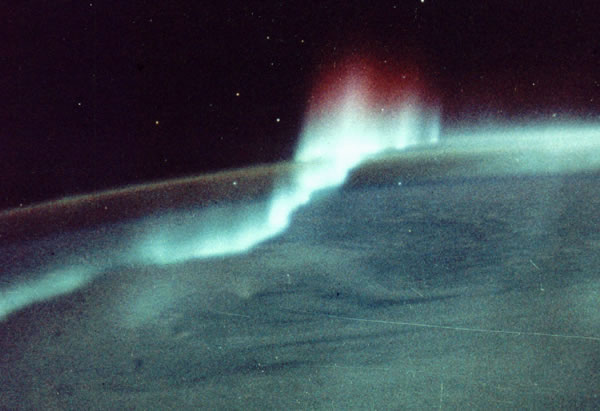
In collisions between the electrons which come from the Earth’s magnetotail and the atoms in the atmosphere, the electrons give their energy to these atoms and make them glow.]
This light, as seen by a satellite, hangs like curtains from space.
VISUAL 20 (still): Auroral Oval
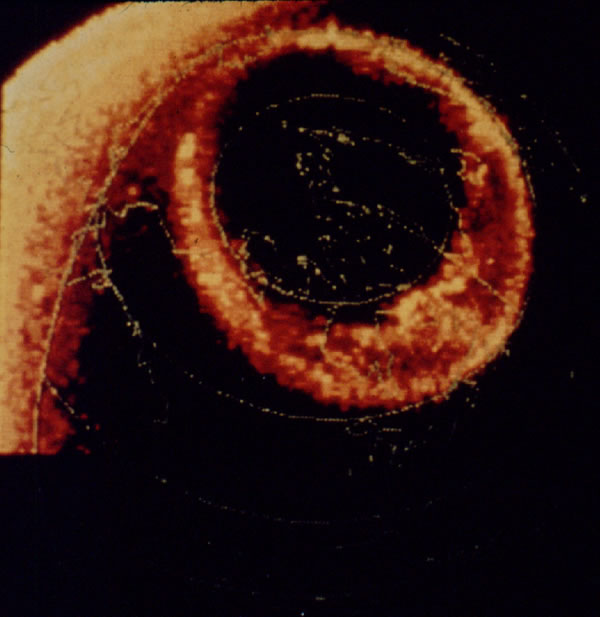
The arrangement of lights around the north pole can be seen in this view from a satellite. They ring the magnetic pole in an oval that is slightly pushed back from the daylight side of the Earth. This is the auroral oval. The process that makes lights in the north also makes lights in the south at the same time. They are the southern lights, or the aurora australis.
[Fade off Auroral Oval.]
VISUAL 21 (still): Northern and Southern Lights
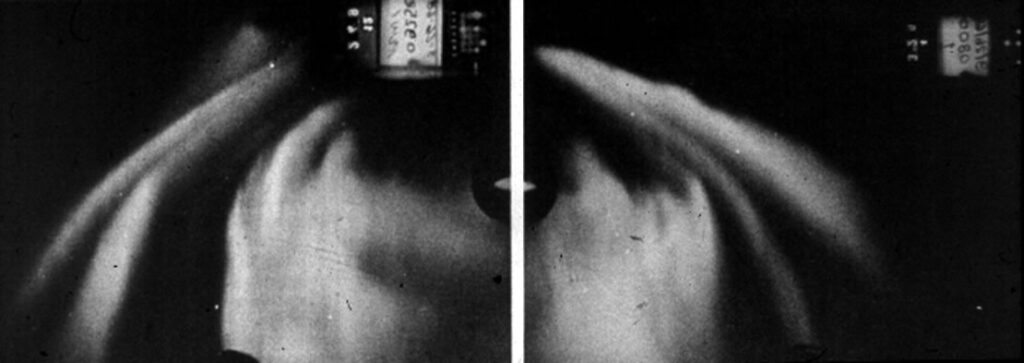
The patterns of the northern and southern lights, as shown in these satellite views, mirror each other.
A hundred years ago people did not know whether the aurorae were just above the tree tops, as high as the clouds, or even higher. A Norwegian physicist, Carl Stormer, solved this problem at the beginning of the 20th century (by using parallax measurements.)
[Fade off Northern and Southern Lights]
VISUAL 22 (still): Colors in the Aurorae—Green
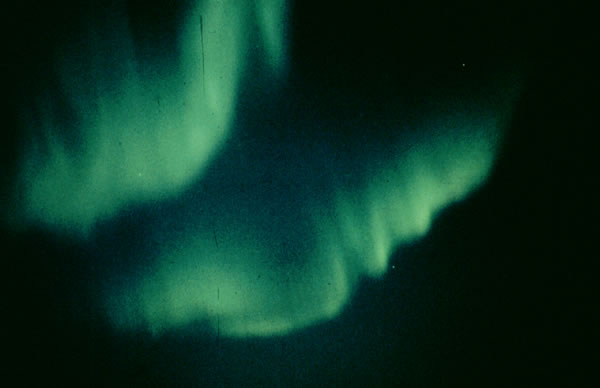
The height is very stable at the lower end at about 65 miles (110 km.) Typically the fast moving rays at the lower end are green and are caused by electrically excited oxygen atoms.
VISUAL 23 (still): Colors in the Aurorae—Blue
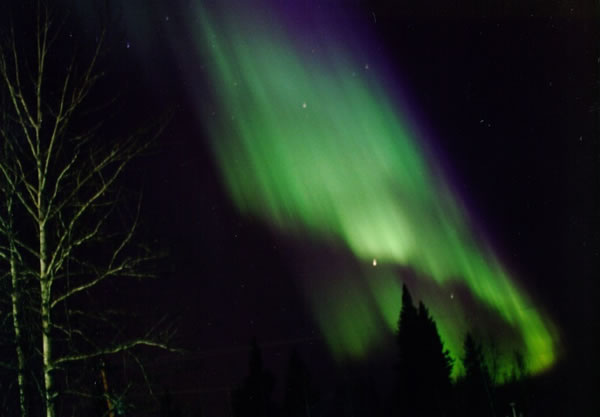
Blue and magenta colors come from excited nitrogen atoms (ions) at very high altitudes—600 mi (1000 km).
VISUAL 24 (still): Colors in the Aurorae—Red
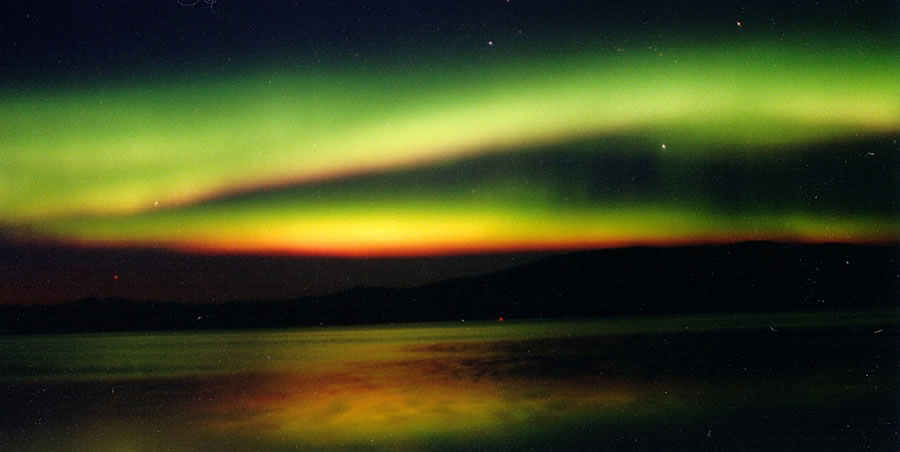
Red colors can come from two sources: excited nitrogen molecules at low altitudes, 40–55 mi (60–90 km) and oxygen atoms at altitudes higher than 90 mi (150 km) where they are excited by particles with less energy and give off a steady “blood-red” glow. On the rare occasions when the aurorae are seen from far away in the south, such as in central North America, the red color may be the most visible, since only the tops of the aurorae are visible from those southerly locales. Low altitude red fringes are caused by higher energy particles penetrating the atmosphere and exciting nitrogen molecules.
[Fade off Colors in the Aurorae.]
Quick-Reference Table of Aurora Colors and Heights
| Visual color | Emitting ion, atom or molecule | Wavelength(nm) | Height(km) |
| violet-purple | N+ (nitrogen ion) | 391.4 | 1000 |
| violet-purple | N+ | 427.8 | 1000 |
| red | O | 630.0 and 636. | > 150 |
| green | O (oxygen atom) | 557.7 | 90-150 |
| red | N2 (nitrogen molecule) | 661.1, 669.6, 676.8, and 686.1 | 65-90 |
Gray-colored aurorae may be seen also.
Such observations are a result of light levels below the color threshold of the eye.
Optional: High Voltage Aurora Simulation Here in the planetarium we can recreate some of these colors. We need some fast moving electrons, so I will turn on a power supply. The electric current through the air is contained, happily for us, in this tube. Turn on the power supply. Any light? Why not? The air in the tube is too thick and the electrons bump into molecules in the air before they get enough speed. We have a vacuum pump that will pull air out of the tube to make it thinner. Turn on the vacuum pump.Now that the electrons get longer distances to speed up, the air molecules glow. (This is the less energetic red light. We would need a more sophisticated apparatus to create the green light.) We can now see the northern lights in a bottle. Watch as I show how a magnet affects the pattern of light. Wave a magnet near the tube.See the lights flicker and fade as I let the air back into the tube. Turn off the vacuum pump. When the glow has faded turn off the power supply.

